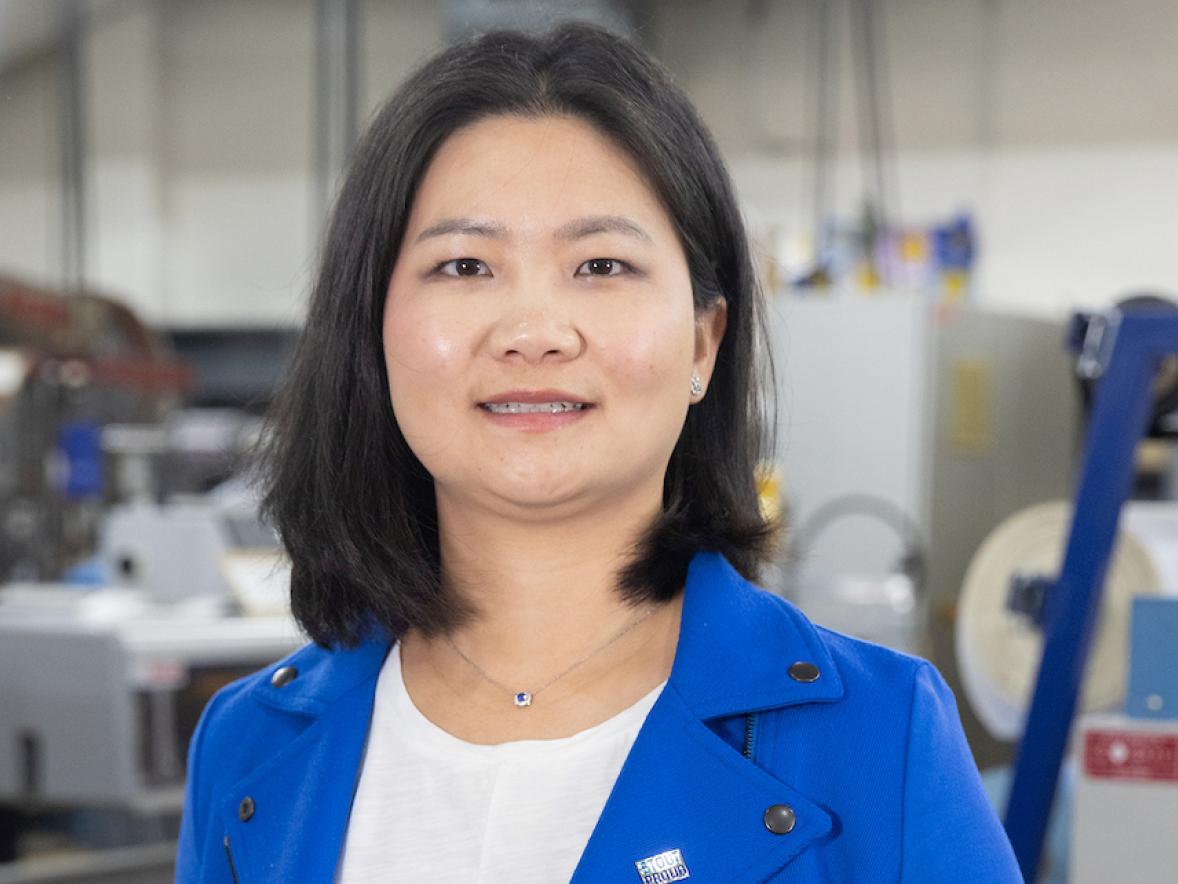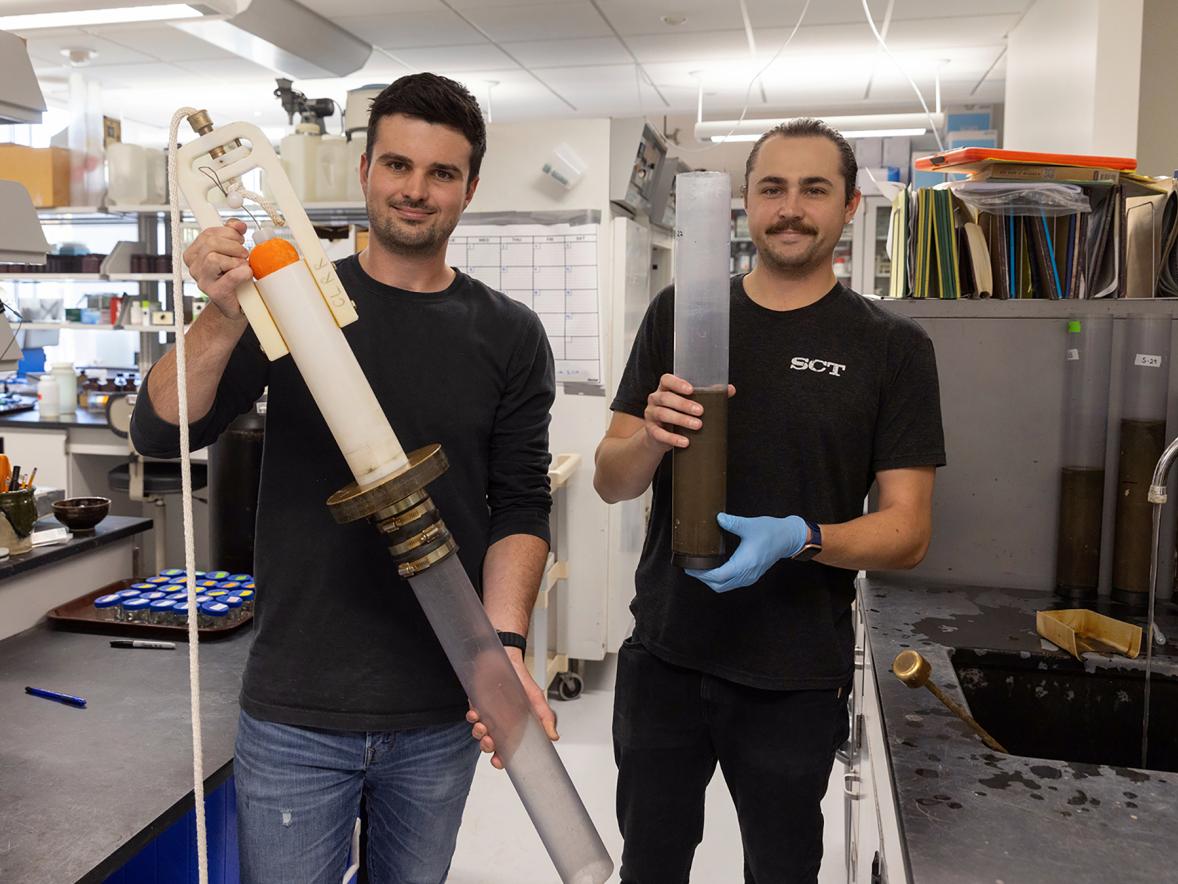Could careers with NASA be in the future of three University of Wisconsin-Stout students?
It’s a possibility — especially if they have anything to say about it — after they recently had “awesome” experiences with the nation’s aeronautics and space agency.
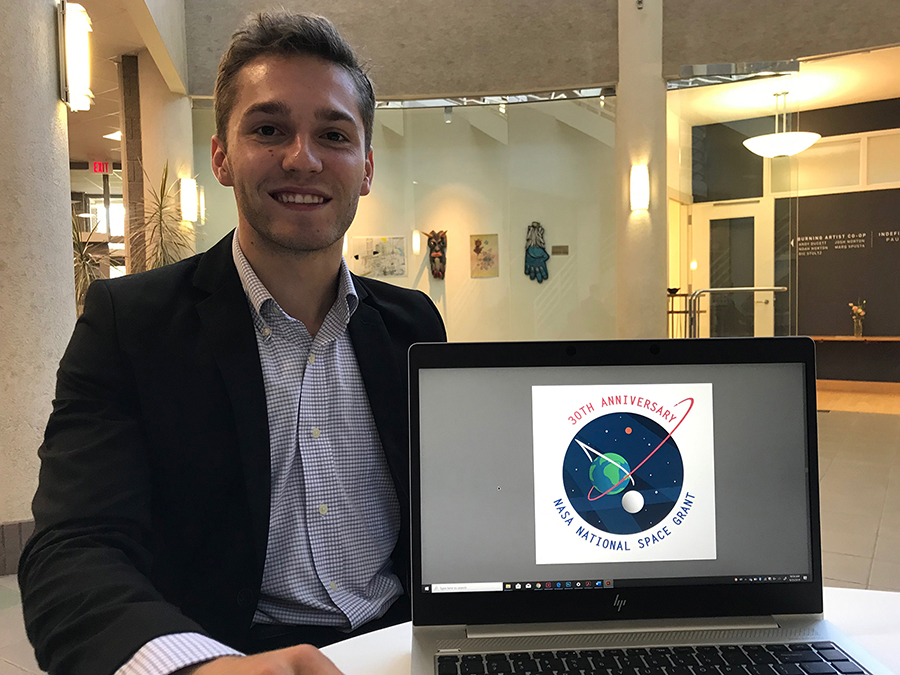
Kristofer Tremain won a national award while Sophie Gelhar and Taylor Thomas had inspiring internships last summer with NASA. When their studies are finished at UW-Stout, they would be happy to return to begin their professional careers.
Tremain, a senior from Rochester, Minn., is an industrial design major and used his all-around skills from UW-Stout’s School of Art and Design to create a logo for NASA’s Space Grant Consortium, which works with students in every state.
“This definitely opened my eyes to other career possibilities,” said Tremain. “It’s another area of design I never really considered. Talking to people who have worked at NASA, more and more they’re looking for new interns and hires past the typical math and science majors to get a different point of view and perspective.”
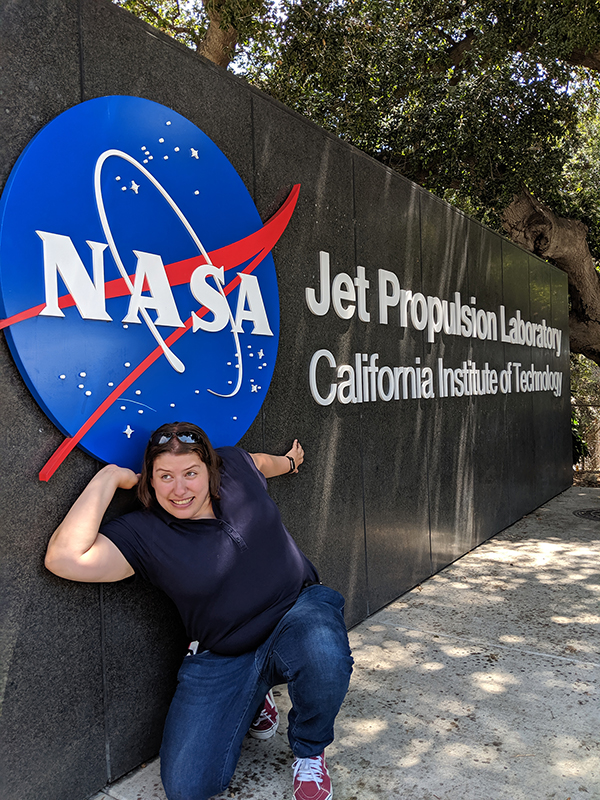 Gelhar and Thomas had internships in the more traditional NASA area of aeronautics. Gelhar, of Green Bay, is a junior majoring in engineering technology. Thomas, of Forest Lake, Minn., is a senior in applied mathematics and computer science; and a second major in information and communication technologies.
Gelhar and Thomas had internships in the more traditional NASA area of aeronautics. Gelhar, of Green Bay, is a junior majoring in engineering technology. Thomas, of Forest Lake, Minn., is a senior in applied mathematics and computer science; and a second major in information and communication technologies.
They hope to apply for the NASA Pathways program, which would bring them back for future internships, provide support for their education and put them in pipeline for full-time NASA work.
After attending the Wisconsin consortium’s annual space conference in August at UW-Platteville, Gelhar has decided to add a second major, applied science with a concentration in physics, and seek a master’s degree to help expand her career possibilities.
“Aerospace also isn't limited just to engineering majors. There are positions available to all types of degrees and concentrations. Some of the people I met at the WSGC's symposium were in medical and biological fields, and our first speaker was a lawyer who has worked with international space law in Washington, D.C.,” she said.
“This experience has been life-changing for me and has changed what I want for my future. I loved the environment of a research center and really felt like I was part of something bigger than myself. It was a safe space to brainstorm and experiment, and it really felt like the possibilities were endless,” she said.
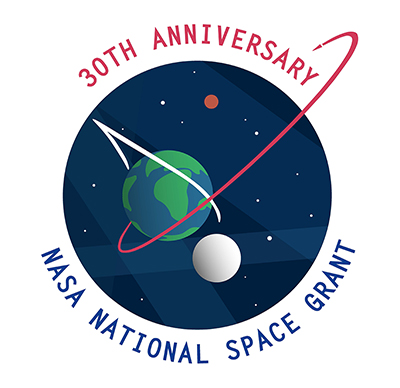 Memorable NASA experiences
Memorable NASA experiences
Tremain submitted his logo design after getting feedback from professors Ben Pratt and Erik Evensen. He said he was shocked to learn last spring that he had won, given that his main design interests are product-related — furniture, lighting and transportation. He recently had a co-op position through UW-Stout at Halcon Furniture in Stewartville, Minn.
The logo celebrates the 30th anniversary of the program for the National Council of Space Grant Directors. It will appear on printed materials and the website. The logo also will be featured later this year in Washington, D.C., during a Capitol Hill event for the 52 space grant programs, featuring congressional representatives.
Tremain said he incorporated “some classic visuals from other NASA logos to keep it on theme with NASA programs while also adding my own identity to it.”
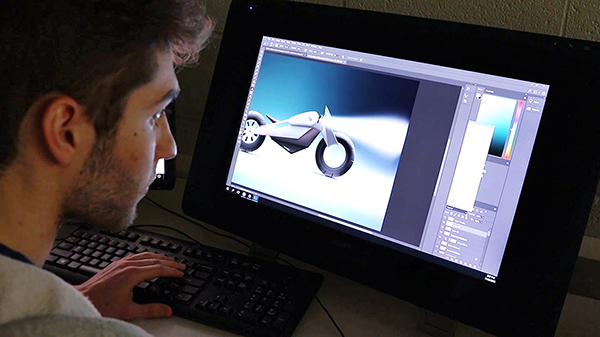 Being presented the award on stage in Platteville with rocket scientists and seeing the work of other students “was pretty awesome” and eye-opening from a career perspective, he said.
Being presented the award on stage in Platteville with rocket scientists and seeing the work of other students “was pretty awesome” and eye-opening from a career perspective, he said.
Gelhar and Thomas were among 66 UW System students who had internships this year through the space grant consortium.
It was Thomas’ fourth straight internship at NASA centers, starting in summer 2018 at Goddard in Maryland followed by fall and spring at Kennedy in Florida. This past summer at Langley in Virginia, he was on an eight-person team that worked on a commercial aerial fleet system using drones.
He will graduate in December and begin a master’s program in space systems engineering at Johns Hopkins University in Baltimore.
Gelhar, a member of the Society of Women Engineers student chapter at UW-Stout, called it one of the “most exciting moments of my life” when she learned she was chosen and assigned to Ames Research Center in Mountain View, Calif., in the Silicon Valley.
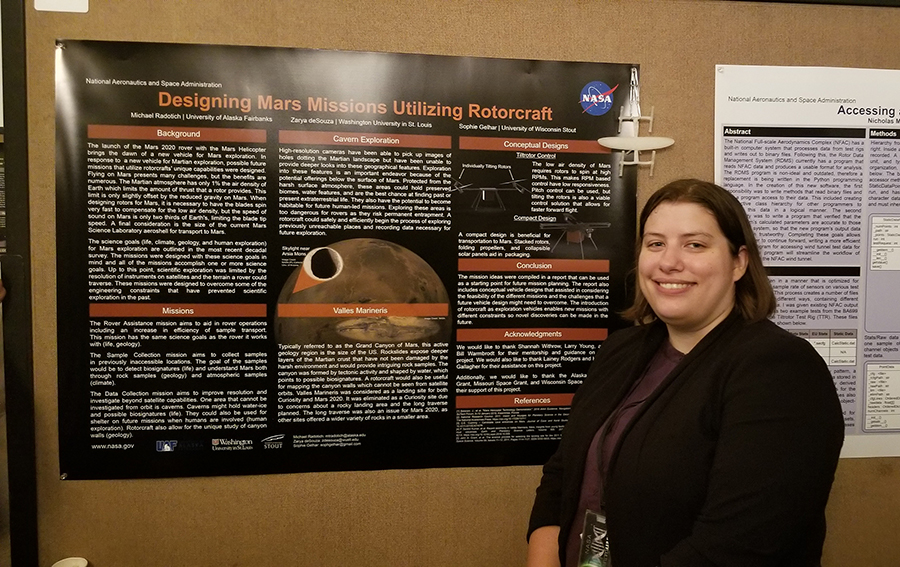
She was on a small team — Ames had 75 interns overall — with students from Alaska and Missouri that researched drone missions on Mars, which someday could be the first nonhuman flights on another planet.
“I have never really participated in mission development and research before, so this was a very new experience for me. Someday there might be autonomous rotorcraft on Mars performing the missions we designed. Our research may someday contribute to a human presence on Mars. It's humbling and honoring to be a part of that,” she said.
The daylong space conference in Platteville also inspired her as she realized the scope of the aerospace industry in the Midwest.
“Sometimes space exploration is presented as an expensive waste, but it really has an important impact on all of us. Cell technology, medical advancements, even environmental and biological solutions are being tested and worked on by NASA and its partners,” Gelhar said.
###
Photos
Kristofer Tremain, an industrial design major, won a student logo design competition for the NASA Space Grant Consortium.
Sophie Gelhar enjoys a visit to NASA’s Jet Propulsion Laboratory in California during her NASA summer internship at Ames Research Center in Mountain View, Calif.
Tremain’s logo will be featured later this year in Washington, D.C., during a Capitol Hill event for the 52 space grant programs.
Tremain works on a project in an industrial design lab at UW-Stout.
Gelhar researched drone flights on Mars with two other students during a NASA internship last summer in California.





